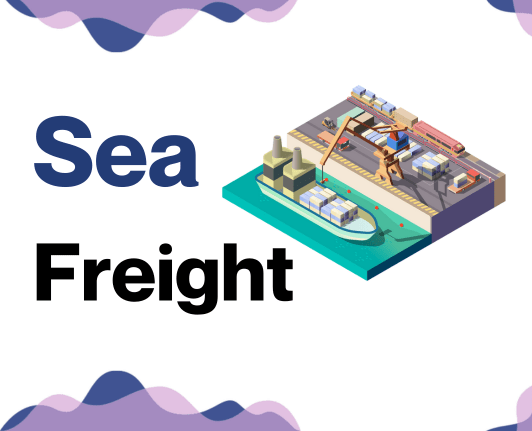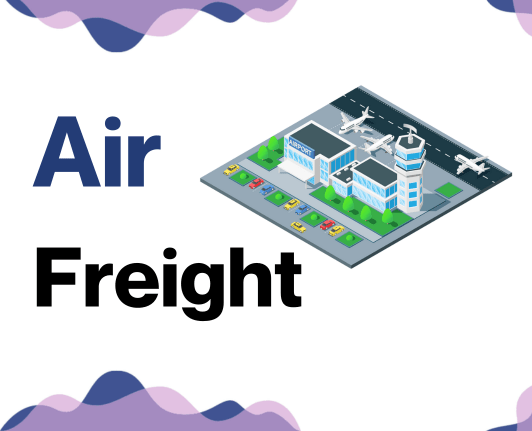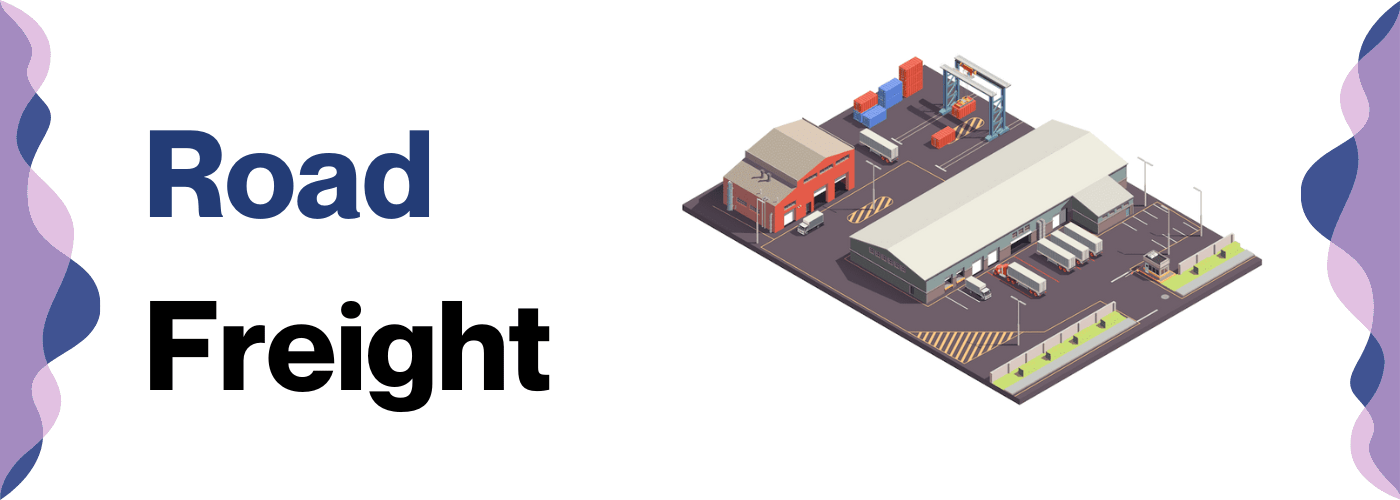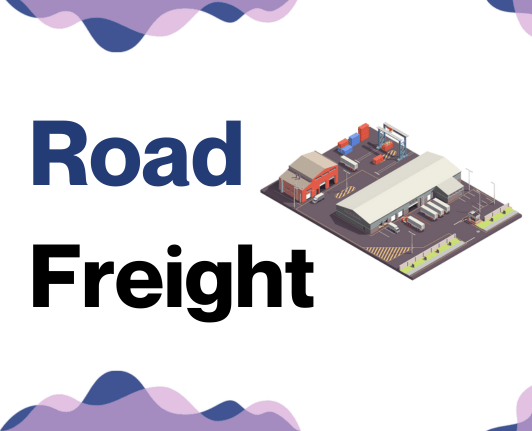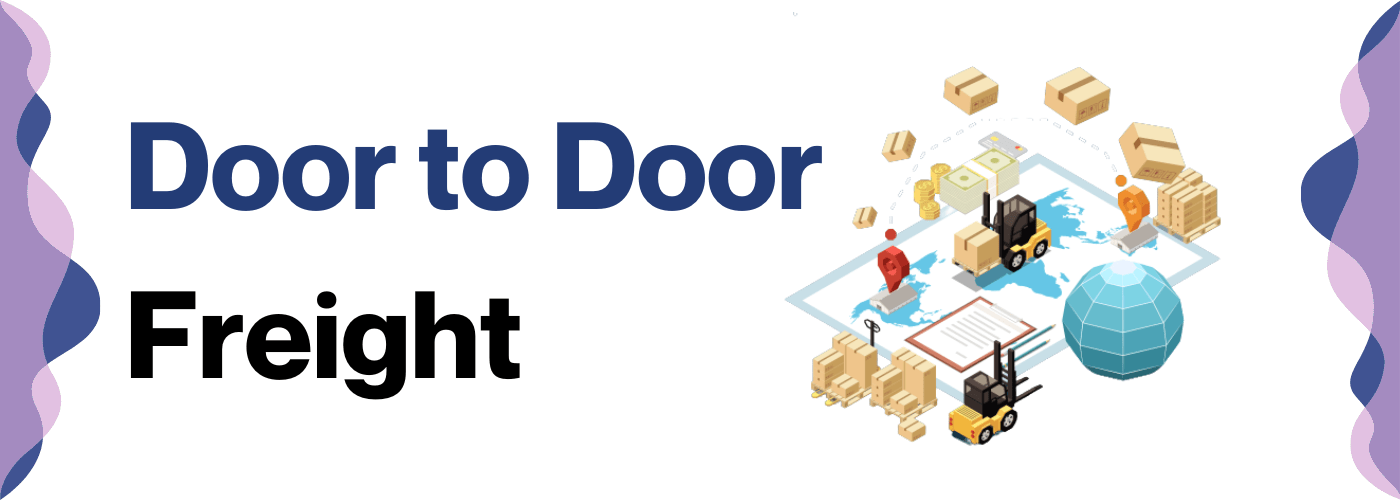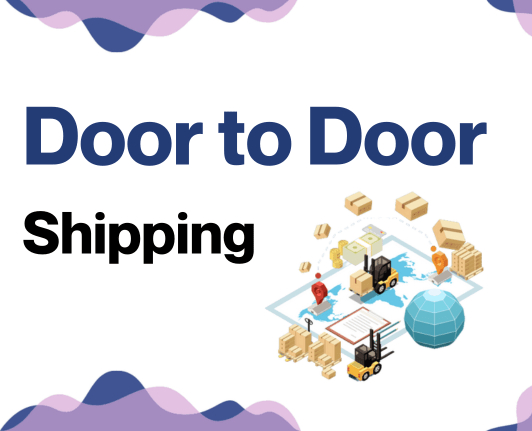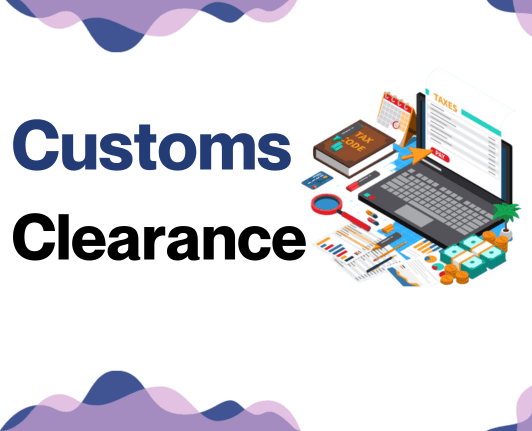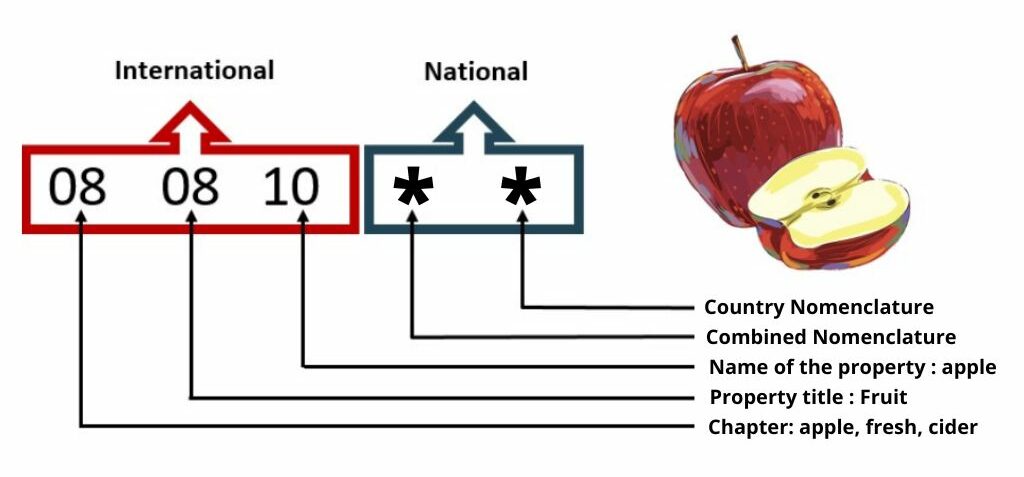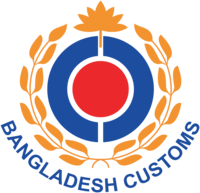If you thought shipping a parcel was more challenging than eating durian, wait until you try shipping a container from Malaysia to Bangladesh! The task can often feel like unravelling a ball of tangled threads, given the intricate steps of decoding freight rates, transit times, and customs regulations. This guide is your beacon in the dark, designed to demystify the complexities of international freight transport. We cover everything from selecting the appropriate freight option (air, sea, road, rail) to understanding the ins and outs of customs clearance, duties, taxes, as well as offering invaluable business-specific advice. If the process still feels overwhelming, let DocShipper handle it for you! As an industry leader in freight forwarding, we specialize in turning shipping challenges into triumphs! Trust us to make your shipment experience as easy as sipping a cup of teh tarik.
Table of Contents
Which are the different modes of transportation between Malaysia and Bangladesh?
Choosing the ideal transport method between Malaysia and Bangladesh can feel like picking the fastest fish in a vast ocean. Despite the shared border with Thailand and sea route, road or rail might not be practical due to long distances and potential bottlenecks. So, just like a seafaring explorer, ocean freight sails ahead as a reliable choice for bigger cargoes. But for urgent or high-value consignments, air freight, akin to a swift bird, may hold the edge. Remember, picking the right transport path is instrumental in ensuring your shipments arrive safe, sound, and timely, just like choosing the best steed for a long journey.
How can DocShipper help?
Looking to ship goods from Malaysia to Bangladesh? At DocShipper, we handle the tough logistics for you - from arranging transport, tending to customs clearance, to managing documentation. Why gamble with your shipment? Join the sure. Click here for a free estimate in under 24 hours. For any queries, feel free to call our consultants round the clock. We're here to simplify your shipping.
DocShipper Tip: Sea freight might be the best solution for you if:
- You're dealing with hefty quantities or oversized goods. Sea transport is your go-to for maximizing space without stretching your budget.
- Time sensitivity isn't a concern for your shipment. Ocean freight is known for its leisurely pace, especially when compared to the speed of air or rail.
- Your supply chain connects key international harbors. This positions you to take full advantage of a wide-reaching network of ocean trade routes.
Sea freight between Malaysia and Bangladesh
Delving into the vast scope of ocean shipping between Malaysia and Bangladesh, it's clear that these two nations share a bustling trade relationship, spearheaded by major cargo ports like Port Klang in Malaysia and Chittagong in Bangladesh. These bustling hubs connect key industrial centers, creating a vital trade lifeline. Despite being the tortoise in the shipping race, sea freight makes up for its slowness by being incredibly cost-friendly when shipping high-volume goods.
But let's not sugarcoat it. The voyage isn’t always smooth. Many businesses find themselves lost in the complex intricacies and unpredictable pitfalls of this particular shipping route. Getting tangled in freight jargon, battling with customs clearances, or struggling with inefficient packing can become more than simple hindrances. It's like organizing a soccer game without knowing the rules! But take heart, even these daunting tasks have rules of the game to follow. Our destination guide peels back these layers, shedding light on the best practices and crucial specifications to master this route. Through this knowledge, shipping from Malaysia to Bangladesh can become less like navigating unpredictable seas and more like cruising a well-guided river.
Main shipping ports in Malaysia
Port Klang
Location and Volume: Situated on the west coast of Peninsular Malaysia, Port Klang plays a key role in the nation's shipping industry, handling over 13.2 million TEU in 2020.
Key Trading Partners and Strategic Importance: Principal trade partners include China, Singapore, and Europe. As the main gateway to the country, it holds strategic importance by being a vital part of the Maritime Silk Road.
Context for Businesses: If you're targeting markets in South East Asia and beyond, Port Klang might be the ideal hub due to its seamless transshipment capabilities and multiple-weekly services to over 120 ports on direct call.
Tanjung Pelepas
Location and Volume: Located in the Johor Bahru District, Tanjung Pelepas is the second-largest port in the country, reporting a shipping volume of 8.9 million TEU in 2020.
Key Trading Partners and Strategic Importance: This port has strong ties with Singapore, Indonesia, and Thailand. Its importance comes from its strategic location at the confluence of the Straits of Malacca and the Straits of Johor.
Context for Businesses: If you're keen on optimizing your transport time for Asian markets, Tanjung Pelepas, with its ultra-modern infrastructure and world-class services, could be a great fit, especially for transshipment traffic.
Bintulu Port
Location and Volume: Bintulu Port, situated on the island of Borneo, had a shipping volume of 1.8 million TEU in 2020.
Key Trading Partners and Strategic Importance: This port mainly trades with Indonesia, China, and the Philippines and is known for being the world's largest liquefied natural gas export facility.
Context for Businesses: For entities shipping energy-related goods to Asian markets, Bintulu Port stands as a strategic choice given its strong foothold in the energy logistics sector.
Tanjung Bruas Port
Location and Volume: Located close to Melaka city, this port isn't one of the largest with around 0.14 million TEU volume, but it's growing rapidly.
Key Trading Partners and Strategic Importance: The key trading partners include countries along the Straits of Malacca, and Tanjung Bruas Port is primarily used for bulk and liquid cargo.
Context for Businesses: If your business handles bulk goods or liquid products and targets markets along the Straits, consider incorporating Tanjung Bruas into your logistics plan due to its specialization in these type of cargo.
Penang Port
Location and Volume: Positioned at the northern part of Peninsular Malaysia, the Penang Port had a volume of around 1.45 million TEU in 2020.
Key Trading Partners and Strategic Importance: Predominantly trading with China, India, and Japan, it is a strategic hub, offering extensive direct shipping lines to over 200 ports worldwide.
Context for Businesses: For those with a wide range of target markets and value fast services, Penang Port’s expansive network and prompt services facilitate swift global trade.
Labuan Port
Location and Volume: Labuan port is located off the coast of Borneo, with a shipping volume of 0.8 million TEU in 2019.
Key Trading Partners and Strategic Importance: Predominantly shipping to Brunei, Sarawak, and Sabah, the port is central to the oil and gas industries, making it strategically important to energy sectors.
Context for Businesses: If your enterprise is in the energy sector, Labuan Port's strong focus on oil and gas-centric infrastructure could make it an ideal choice for your shipping requirements.
Main shipping ports in Bangladesh
Chittagong Port
Location and Volume: Located on the southeastern coast of Bangladesh by the Bay of Bengal, Chittagong Port is an essential hub for the country's trade, acting as the main conduit for around 92% of Bangladesh's import-export trade with a shipping volume of over 3.1 million TEU.
Key Trading Partners and Strategic Importance: This port has vital trade relationships with China, India, Singapore, and Hong Kong, bolstering its regional and global strategic importance. It also holds a crucial role in serving landlocked countries like Nepal and Bhutan.
Context for Businesses: If you're exploring opportunities in the rapidly-growing Asian market, Chittagong Port's high throughput and strong connections to key regional economies may streamline your logistics, given its established shipping lines and comprehensive services.
Mongla Port
Location and Volume: Situated on the southwestern coast by the Pussur River, Mongla Port is Bangladesh's second busiest sea port. The port boasts a shipping volume of over 900,000 TEU, handling roughly 15% of the country's external trade.
Key Trading Partners and Strategic Importance: With strong ties to countries like Nepal, Bhutan, and the northeastern states of India, Mongla plays a critical part as a transit point for regional commerce.
Context for Businesses: For businesses looking to reach the northeastern Indian market, Mongla Port can provide a strategic advantage due to its proximity and connections to India's northeastern states. Its comprehensive facilities and services aid seamless cargo handling.
Payra Seaport
Location and Volume: Nestled on the southern coast of Bangladesh, Payra Seaport is the latest and the third official sea port in the country. Although it's a newer port, its development plans and potential scale of operations position it as a fast-growing trading hub.
Key Trading Partners and Strategic Importance: Payra Seaport is in its initial development phase, focused on building strong trading relationships with multiple countries. It's designed to provide an alternative to the congested Chittagong Port.
Context for Businesses: For businesses seeking an entry point into the Bangladeshi market with less congestion and more modern facilities, Payra Seaport could prove increasingly beneficial as its infrastructure develops and capacity expands.
Should I choose FCL or LCL when shipping between Malaysia and Bangladesh?
Shipping goods between Malaysia and Bangladesh presents two main sea freight options: Full Container Load (FCL) and Less-than-Container Load (LCL), often referred to as consolidation. Your choice could pivot the cost, delivery time, and overall success of your shipment. While FCL dedicates one full container to your goods, LCL groups your shipment with others in the same container. This choice isn't one-size-fits-all, it requires careful consideration about your specific needs. So how do you decide? Let's unpack these options, helping you steer your shipping decision with confidence and success.
LCL: Less than Container Load
Definition: Less than Container Load (LCL) is an economical method of shipping smaller volumes of goods, often used when cargo doesn't fill a full container. Shipment is consolidated with others, resulting in an LCL shipment.
When to Use: LCL freight is a flexible option for businesses shipping low volumes, especially when cargo is less than 13/14/15 CBM. This option makes the most sense when the timeliness of FCL shipping isn't a necessity.
Example: Consider a textile manufacturer in Malaysia seeking to ship 10 CBM of specialty fabrics to a fashion house in Bangladesh. Given the volume, the goods wouldn't fill a full container, making LCL shipping a cost-effective choice.
Cost Implications: With LCL, you pay only for the space you use, but rates may be higher per cubic meter compared to FCL. Other expenses include handling fees at the destination, deconsolidation charges, and potential storage costs when deliveries aren't immediate. LCL's cost-effectiveness lies in its ability to cater to smaller shipments, providing businesses the flexibility to manage their supply chains more efficiently.
FCL: Full Container Load
Definition: FCL, or Full Container Load, refers to fcl shipping where an entire 20'ft or 40'ft fcl container is used by one shipper.
When to Use: It's an ideal option when your cargo volume exceeds 14-15 CBM. As you control the whole space, it guarantees safety, as the container is sealed from source to destination.
Example: Consider a manufacturer in Kuala Lumpur looking to export heavy machinery components to Dhaka. With a total volume well beyond 15 CBM, the best option is to get an fcl shipping quote for a 40'ft container. This not only ensures space for all goods but also maintains their security.
Cost Implications: Although the initial costs can be higher with FCL due to the container's size, for higher volume shipments, the cost per unit becomes cheaper. So, if you're shipping large quantities regularly, FCL will bring substantial cost benefits. Remember to consider destination charges in your budgeting.
Unlock hassle-free shipping
With the complexities involved in international shipping, choosing between consolidation or full container can be daunting. Decisions like these are where DocShipper shines. As your dependable freight forwarder, we're committed to simplifying shipping for businesses, aiding you in making the most informed decisions. Our team of ocean freight experts assesses various factors such as batch volume, type of goods, time-sensitivity and costs. Whether it's Malaysia or Bangladesh, we've got you covered. Feel the DocShipper difference - why not get your free estimation now? The key to stress-free shipping could be just a click away!
How long does sea freight take between Malaysia and Bangladesh?
On average, sea freight shipment from Malaysia to Bangladesh spans across roughly 4-7 weeks, subject to multiple factors. The specific ports used, weight, and nature of the goods are among several influential contributors to these varying transit times. For an accurate picture based on your particular needs and product specifications, we recommend partnering with a specialized freight forwarder like DocShipper, who can offer a tailored quote.
Below is a standard table showcasing the average transit times between the principal freight ports of both nations:
| Port in Malaysia | Port in Bangladesh | Average Transit Time (in days) |
| Port Klang | Chittagong Port | 3 |
| Penang Port | Mongla Port | 15 |
| Johor Port | Payra Port | 18 |
| Bintulu Port | No Fourth Port | 20 |
How much does it cost to ship a container between Malaysia and Bangladesh?
Unveiling the exact cost of shipping a container from Malaysia to Bangladesh is like unmasking a secret recipe; multiple ingredients factor in, and it's never one-shape-fits-all! Ocean freight rates, the Point of Loading, the Point of Destination, the carrier, the nature of your goods, and even the caprices of monthly market fluctuations play crucial roles that create a broad shipping cost spectrum per CBM. But don't you worry! Our adept shipping specialists are on hand to guide you through this labyrinth, meticulously quenching your unique requirements to quote the best possible rates on a case-by-case basis. Satisfaction in this exciting voyage is our pledge!
Special transportation services
Out of Gauge (OOG) Container
Definition: Out of Gauge or OOG container is a shipping technique used when cargo dimensions exceed the standard container limitations. It's ideal for large, heavy, or awkwardly shaped cargo.
Suitable for: OOG is perfect for transporting oversized equipment, machinery, and industrial components.
Examples: Popular for machinery like excavators, tractors, or turbines.
Why it might be the best choice for you: For businesses with cargo beyond standard dimensions, OOG can cater your out of gauge cargo shipping from Malaysia to Bangladesh uniquely.
Break Bulk
Definition: Break Bulk refers to goods that must be loaded individually rather than in a shipping container. Break Bulk ships have large open holds to accommodate varied cargo sizes.
Suitable for: Works best with large items, such as machinery or pipes that don't fit into standard containers.
Examples: Used commonly in the shipping of construction materials or oversized equipment.
Why it might be the best choice for you: If you've got large units of loose cargo load going to Bangladesh from Malaysia, break bulk is the answer.
Dry Bulk
Definition: Dry Bulk refers to the shipping of unpackaged bulk goods like grains, coal, or gravel.
Suitable for: Ideal for companies dealing with commodity goods.
Examples: Used heavily in the transport of agriculture or mining products.
Why it might be the best choice for you: Dry bulk could be your economical solution if dealing with high volume commodity goods.
Roll-on/Roll-off (Ro-Ro)
Definition: Roll-on/Roll-off shipping, known as Ro-Ro, involves vehicles or machinery rolled on and off a specifically designed vessel.
Suitable for: Beneficial for automobiles, trucks, trailers, and railroad cars.
Examples: Commonly used for shipping cars, buses, or other wheeled cargo.
Why it might be the best choice for you: If you're shipping motorised equipment or vehicles to Bangladesh, a ro-ro vessel ensures less handling, hence less damage to your cargo.
Reefer Containers
Definition: Reefer containers are temperature-controlled containers used for keeping perishable goods at their required temperatures during transit.
Suitable for: Ideal for businesses dealing with perishable goods like fruits, vegetables, dairy products, or pharmaceuticals.
Examples: Widely employed in the transport of meat, seafood, or medicines.
Why it might be the best choice for you: If you have goods that need specific temperature control when shipping from Malaysia, reefer containers will ensure the fresh arrival of your product in Bangladesh.
At DocShipper, we understand that every business has unique needs. Beginning your shipping journey from Malaysia to Bangladesh? Let us make it seamless and effortless for you. We can provide a free shipping quote in less than 24 hours, tailored to your specific needs. Start your smooth shipping experience with us today.
DocShipper Tip: Air freight might be the best solution for you if:
- You're pressed for time or facing a non-negotiable deadline. Air freight delivers unparalleled speed when it comes to transit times.
- Your shipment is modest in size, falling under 2 CBM. Air freight is particularly well-suited for these smaller consignments.
- Your supply chain includes destinations that are off the beaten maritime or rail paths. Air freight gives you access to a comprehensive global airport network.
Air freight between Malaysia and Bangladesh
When zooming goods from Malaysia to Bangladesh, air freight is an express lane in the sky; speedy and trustworthy, perfect for smaller, high-value parcels. Imagine you're shipping pricey electronics or life-saving medicines; these aren't goods you'd trust on a slow boat. Air freight swoops in like a trusty superhero, with lightning speed and reliability, saving the day for fragile or urgent shipments.
However, some businesses face challenges akin to trying to thread a needle in the dark. They stumble to correctly gauge their shipment's weight, which omits oversized packages or doesn't account for dimensional weight. Another trap is a lack of knowledge about the best practices in air freight, causing an inadvertent spike in costs. Just like a master chef fine-tuning his recipe, knowing the nitty-gritty of air freight can help businesses whip up a cost-effective and hassle-free shipping experience. Stay tuned as we unpack these complexities in our detailed guide.
Air Cargo vs Express Air Freight: How should I ship?
Weaving through the maze of options when shipping from Malaysia to Bangladesh? Whether you want to load your merchandise onto a commercial airline as cargo, or speed is your game and you prefer express shipping with a devoted aircraft, we're here to simplify it. Dive in to explore the differences, pros, and cons, helping you make the best decision tailored to your business needs.
Should I choose Air Cargo between Malaysia and Bangladesh?
Considering shipping goods between Malaysia and Bangladesh? Opting for air cargo might be the ideal choice. Airlines like Malaysia Airlines and Biman Bangladesh Airlines offer reliable services with fixed schedules. Though these schedules may lead to longer transit times, the cost-effectiveness and reliability of this mode stand out. Perfect for freight between 100/150 kg (220/330 lbs), air cargo is both budget-friendly and efficient. Remember, the right shipping method is key to streamlining your operations and achieving significant savings.
Should I choose Express Air Freight between Malaysia and Bangladesh?
Express air freight is a unique service using cargo planes dedicated solely for freight, no passengers. Specializing in shipments under 1 CBM or roughly 100/150 kg (220/330 lbs), it's often a smart choice for smaller, time-critical cargo. Renowned firms like FedEx, UPS, or DHL provide these services globally, ensuring your shipment reaches from Malaysia to Bangladesh swiftly and securely. If you need quick transfer and less bulky cargo, this might be the perfect solution for your business needs. Consider the weight, dimensions, and urgency of your cargo when contemplating this option.
Main international airports in Malaysia
Kuala Lumpur International Airport (KLIA)
Cargo Volume: Annually, KLIA handles approximately 726,230 tons of cargo, making it a major hub for freight in Southeast Asia.
Key Trading Partners: Singapore, China, Japan, Hong Kong, and Australia.
Strategic Importance: KLIA is centrally located and acts as a primary gateway to Asia. It's also the headquarters for Malaysia Airlines and AirAsia, providing many connections across the region.
Notable Features: The airport's cargo-handling facility, KLIA Air Cargo Terminal 1 (KACT1), offers specialized storage for goods from pharmaceuticals to live animals. It's also a certified halal logistics provider, ideal for food exporters to Muslim-majority countries.
For Your Business: KLIA is a great choice for any business looking to expand its presence in the Southeast Asia market, offering comprehensive cargo services and many regional connections.
Penang International Airport
Cargo Volume: As of recent statistics, the airport handles over 153,703 tons of cargo annually, making it Malaysia's second-busiest cargo airport.
Key Trading Partners: The US, Hong Kong, China, Singapore, and Germany.
Strategic Importance: The airport's location on Penang Island provides easy access to the bustling Penang Port and the industrial areas around it.
Notable Features: Known for its efficient cargo handling, the airport also has a free commercial zone at Bayan Lepas, an industrial area near the airport which hosts several multinational technology companies.
For Your Business: If electronics or tech is your trade, Penang International can offer an efficient shipping solution alongside potential local business partnerships.
Senai International Airport
Cargo Volume: This airport sees upwards of 67,770 tons of cargo each year, establishing it as a crucial shipping point within Malaysia.
Key Trading Partners: Indonesia, Thailand, Australia, China, and Singapore.
Strategic Importance: Located in the industrial region of Iskandar Puteri, it's close to factories and businesses operating in the area. It's the main gateway for the southern region of Peninsular Malaysia.
Notable Features: Its handling facilities can accommodate an array of cargos, including perishables, dangerous goods, and live animals. The airport also offers warehousing and freight forwarding services.
For Your Business: The proximity to the Iskandar Malaysia industrial area and connectivity to neighboring Indonesian islands make Senai Airport a strategic choice for your freight needs.
Subang Sultan Abdul Aziz Shah Airport
Cargo Volume: The airport handles over 52,000 tons of cargo per year, making it another significant point of shipping within Malaysia.
Key Trading Partners: Singapore, Thailand, Vietnam, and Indonesia.
Strategic Importance: It's situated in Subang, a satellite town of Kuala Lumpur, making it effortlessly accessible.
Notable Features: It's a secondary hub for the region's cargo sector, hosting express courier companies such as DHL and FedEx.
For Your Business: The airport is an ideal choice if speedy courier service for shipping smaller consignments is integral to your business operations.
Langkawi International Airport
Cargo Volume: This airport processes about 7,911 tons of cargo annually.
Key Trading Partners: China, India, UK, Australia, and Indonesia.
Strategic Importance: Strategically located within the Langkawi free trade zone, it provides duty-free trading opportunities.
Notable Features: The airport is known for its quick cargo processing times and its focus on supporting the regional tourism industry.
For Your Business: Langkawi International supports your business by providing fast, efficient cargo services and an opportunity to ship duty-free goods.
Main international airports in Bangladesh
Hazrat Shahjalal International Airport
Cargo Volume: Handles over 350,000 tons of cargo per year.
Key Trading Partners: Major trading partners include China, India, the USA, and the EU.
Strategic Importance: As Bangladesh's largest airport, it serves as the primary international gateway, making it crucial for import/export activities.
Notable Features: The airport has two parallel runways capable of handling large cargo planes, a modernized cargo village that can process a high volume of goods efficiently, and a dedicated air freight unit for perishable items.
For Your Business: With the airport's continuous expansion, including regular services to key business hubs, cargo delivery and receipt are expedited, making it the preferred option for quick turnaround times.
Shah Amanat International Airport
Cargo Volume: Annually handles around 150,000 tons of cargo.
Key Trading Partners: Prominent trading partners are India, Hong Kong, Singapore, and the Gulf nations.
Strategic Importance: Located in Chittagong, the economic capital of Bangladesh, this airport is a vital supporting hub for businesses with a presence in the globetrotting shipping industry.
Notable Features: The airport is equipped with a modern cargo complex, optimum storage space for goods, and an exclusive cargo apron to accommodate large cargo flights.
For Your Business: Its proximity to the Port of Chittagong and several industrial zones makes it an attractive choice for businesses requiring localization and speedy access to the ocean freight network.
Osmani International Airport
Cargo Volume: Processes approximately 70,000 tons of cargo per year.
Key Trading Partners: Key trade collaboration includes China, the Middle-East countries, and the Asian sub-continent.
Strategic Importance: Situated in Sylhet, it connects the north-eastern part of Bangladesh to the international cargo community, catering prominently to the tea and oil industry.
Notable Features: The airport features comprehensive cargo handling facilities with controlled temperature storage making it perfect for perishable cargo.
For Your Business: If your company operates in the tea or oil industry, Osmani's specialisation and geographical location offer succinct benefits.
How long does air freight take between Malaysia and Bangladesh?
Typically, air freight between Malaysia and Bangladesh takes approximately 6-9 days. However, this time frame can vary depending on several factors including the specific airports of departure and arrival, the weight of the cargo, and the nature of the goods being transported. Accurate projective times are crucial for planning, hence reaching out to a professional freight forwarder like DocShipper can provide you with a precise tailored timeline.
How much does it cost to ship a parcel between Malaysia and Bangladesh with air freight?
Average air freight rates from Malaysia to Bangladesh typically range from $3 to $8 per kilogram. However, an exact rate is challenging to provide due to factors like distance from departure and arrival airports, parcel dimensions, weight, and the nature of the goods. Our experienced team will provide case-specific quotes that cater to your unique requirements, ensuring the best rates for your shipping needs. Reach out and receive a customized, no-obligation quote from us in less than 24 hours.
What is the difference between volumetric and gross weight?
Gross weight refers to the actual weight of your shipment, including goods, packaging, and any filling material. It's measured using a standard weighing scale and is typically expressed in kilograms (kg).
On the other hand, volumetric weight, also known as dimensional weight, is a pricing technique used for commercial freight transport, particularly courier and postal services. It's not about actual weight, instead, it reflects the package's density—the amount of space it occupies in relation to its actual weight.
For Air Cargo, volumetric weight is calculated with this formula: Length (cm) x Width (cm) x Height (cm) / 6000. For Express Air Freight services, it's a tad different—the divisor in the formula is 5000 instead of 6000.
Let's imagine a package of machine parts to Bangladesh. It has a gross weight of 20kg and its dimensions are 50cm x 40cm x 30cm. The volumetric weight for Air Cargo would be (50 x 40 x 30) / 6000 equals 10kg (or 22 lbs), and for Express Air Freight (50 x 40 x 30) / 5000 equals 12kg (or 26.5 lbs).
These weights are influential when considering freight charges—carriers charge based on whichever weight is higher, the gross or the volumetric weight. This method prevents low-weight, large packages from being less profitable, balancing cost with space efficiency. This is why understanding these weights is key to estimating shipping costs accurately.
DocShipper tip: Road freight might be the best solution for you if:
- You're looking for a budget-friendly solution for shorter distances. Road freight often outperforms air in cost and beats sea and rail in speed for these types of routes.
- Your target destination is either within your continent or in a neighboring country. For such regional or cross-border shipments, road freight is typically the most efficient and rapid choice.
- Your cargo has unconventional dimensions or form factors. The versatility of trucking allows for the accommodation of various types and sizes of goods that may not fit standard sea or air containers.
Trucking between Malaysia and Bangladesh
Navigating the 3500km journey from Malaysia to Bangladesh, trucking services present an enticing option for businesses to consider. With manageable transit times due to efficient routes and improving road conditions, cost-effective road freight can be a competitive alternative to sea, air, and rail. Although comparatively lengthy transit times and geographical challenges might raise some eyebrows, advantages like fewer regulations, lower costs, and door-to-door delivery cannot be sidelined. Delve further to discover whether this flexible and cost-savvy option fits your cross-border shipping needs.
What if I can’t fill a truck between Malaysia and Bangladesh?
For businesses trading between Malaysia and Bangladesh, choosing between Less Than Truckload (LTL) and Full Truckload (FTL) freight could be the breakthrough in your logistics strategy. Significant savings, agility, and scalability are at stake in this crucial shipping decision. Let's unlock the potential of these shipping methods for your business.
LTL: Less than Truck Load
Less than Truckload, or LTL, is a conveyance method designed for shipping smaller parcels. Simply stated, if you’re not occupying the whole space of a truck with your cargo - that's LTL. Now, LTL becomes your go-to option when the freight is less than 13, 14, or 15 CBM. Let's put that into perspective. Imagine you’re shipping several boxes of electronic components. The combined size maybe just 10 CBM - there's no point hiring a whole truck. With LTL, you only pay for the space you take up, making it a cost-effective option for smaller shipments.
Here are some instances where you might opt for LTL shipping:
- When your freight occupies less than 15 CBM space.
- When a bit of transit time isn't a deal-breaker (LTL shipments may take a bit longer but at a reduced cost).
- When you're shipping less often or at inconsistent frequencies.
In our world of freight forwarding, smart decisions matter. Understanding whether LTL freight suits your needs can help your cash flow and improve operational efficiency. Each option has its place - LTL shipments shine with smaller, less urgent deliveries. Consider this while planning your next shipment between Malaysia and Bangladesh!
FTL: Full Truck Load
Full Truck Load (FTL) freight shipping means hiring an entire truck for transportation of your cargo. It’s beneficial if you have larger consignments exceeding 13-15 CBM (Cubic Meter). Let's say you're sending a bulk order of furniture from Malaysia to Bangladesh that occupies 16 CBM. Choosing FTL would suit you perfectly, offering the benefit of less handling, providing safer and faster delivery.
So, when should you consider FTL for your shipments between Malaysia and Bangladesh?
- Your cargo is time-sensitive: With no other cargo to unload, your shipment arrives quicker.
- You have large or heavy goods: If your products occupy more than the three-fourths of the truck, go for FTL.
- Fragile deliveries: There’s less risk of damage due to minimal handling and direct delivery.
- High-value goods: With complete control over the truck, you can ensure efficient and safe deliveries, mitigating theft risk.
In essence, if you require substantial space, fast delivery, or extra care for your goods, FTL freight might just tick all your requirement boxes. Remember, the embrace of FTL shipment shouldn't be about size alone but also the nature and needs of your goods.
What are the main routes between Malaysia and Bangladesh?
When it comes to road freight between Malaysia and Bangladesh, the AH2, part of the Asian Highway Network, is a significant route. The journey typically kicks off in Malaysia’s bustling capital, Kuala Lumpur, heading north to Bangkok via the vibrant city of Hat Yai. The route then sweeps through the dense jungles of Myanmar, with stops at Yangon and Mandalay. Finally, the journey continues from Myanmar into Bangladesh, reaching its conclusion in the vibrant capital, Dhaka. Weather conditions, particularly during monsoon season, can affect this route significantly, requiring robust planning and contingency strategies. It’s a long trip, but it’s chock-full of colorful cultures, challenges, and commerce.
What are the road transit times between Malaysia and Bangladesh?
The average road transport duration between Malaysia and Bangladesh is around 7-10 days. However, predicting the exact timeframe can be tricky due to unpredictable traffic conditions, circulation restrictions, and occasional subpar road quality, such as the unpredictable road conditions in Myanmar. Keep in mind, these durations are approximations. To obtain a precise cross-border freight quote, feel free to reach out to us and we'll get back to you within 24 hours.
How much does trucking cost between Malaysia and Bangladesh?
Buckle up, intrepid shipper! While nailing down an exact trucking price between Malaysia and Bangladesh can be a bit like herding cats, due to the constant dance of variables involved. But don't you worry! We're on it like cargo on a pallet! We promise to crunch the numbers diligently and dish out the most pocket-friendly quote for your specific needs. Here, every shipment is a unique journey, and we plan accordingly. Cool, right?
DocShipper tip: Door to Door might be the best solution for you if:
- You value convenience and want a seamless shipping process, as door-to-door takes care of every step from pickup to delivery.
- You prefer a single point of contact, as door-to-door services typically provide a dedicated agent to handle all aspects of the shipment.
- You want to minimize the handling of your goods, reducing the risk of damage or loss, as door-to-door minimizes transitions between different modes of transport.
Door to door between Malaysia and Bangladesh
Welcome to the world of Door to Door shipping, where we handle all the intricacies of international freight forwarding from Malaysia right to Bangladesh. Offering complete control, convenience, and cost-effectiveness, it's the epitome of hassle-free shipping. Whether you're a start-up or an established business, prepare for a smoother shipping experience than ever before. So, buckle up as we dive deep into the details!
Overview – Door to Door
Looking for a hassle-free shipping solution between Malaysia and Bangladesh? Door to door shipping is a stress-buster. It's popular among our clients as it covers the complex shipping process - from pickup, customs clearance to final delivery. Although slightly expensive, it saves you the trouble of logistic nightmares, ensuring your goods reach their destination smoothly. However, it's crucial to remain aware of potential customs duties. Remember, every stress-free solution comes with its own challenges, but the benefits of door to door shipping can outweigh them.
Why should I use a Door to Door service between Malaysia and Bangladesh?
Ever wondered how amazing it would be if your shipment from Malaysia to Bangladesh got wings of its own? Well, with Door to Door service it sort-of-can!
1. No Stress about Logistics: Imagine not worrying about organizing every aspect of your shipment's journey. From pick-up at your doorstep in Malaysia to delivery in Bangladesh, the freight forwarder takes care of everything.
2. Timely Delivery for Urgent Shipments: Going with the clock is not everyone's cup of tea. But your shipment sort of dances with time when you choose Door to Door service. It enables you to plan your supply chain more effectively, decreasing the risk of delays.
3. Specialized Care for Complex Cargo: Whether it’s your Grandma’s favorite china or a high-grade industrial machine, complex cargo needs the extra love. Door to Door service ensures your shipment receives top-tier care throughout transit.
4. Full Trucking Until Final Destination: Door to Door service isn't about mere shipping. It's about going beyond boundaries and handling trucking until the cargo reaches its ultimate destination. Talk about ultimate convenience!
5. Absolute Convenience: Let's face it; convenience is key. It feels like your shipment is wearing comfy pajamas while traveling—the freight forwarder handles all tasks, including customs procedures, so you can sit back and relax.
And there you have it, folks, five compelling reasons that make Door to Door service the Louis Vuitton of international shipping between Malaysia and Bangladesh. No more logistics sweat, guaranteed timely delivery, specialized care, full trucking, and superior convenience.
DocShipper – Door to Door specialist between Malaysia and Bangladesh
Ease your logistical concerns with DocShipper's seamless door-to-door shipping services. We proudly manage the entire transportation of goods from Malaysia to Bangladesh, sparing you the complexities of packing, freight scheduling, and customs. You enjoy the luxury of not doing a thing, backed up by our expert team and a devoted Account Executive. Swiftly get in touch for a free estimate within 24 hours or consult with our specialists at no cost. We’re here to take the load off your shipping needs 24/7.
Customs clearance in Bangladesh for goods imported from Malaysia
Navigating customs clearance when importing goods from Malaysia to Bangladesh is no walk in the park. The process can be enigmatic, laced with unforeseen fees, charges, and intricate responsibilities. Ignoring or misunderstanding duties, taxes, quotas, and licenses may result in your goods getting stuck at the border, bringing disruptions and financial strain. Fear not, the following sections of this guide break down these complexities to help you avert such risks. You aren't alone in this journey - DocShipper can handle the entire procedure for all types of goods, worldwide. To get an estimate for budgeting your project, share the origin and value of your goods and their HS Code. This crucial information propels us to create a precise plan. So, let's dive deeper and demystify this complex process.
How to calculate duties & taxes when importing from Malaysia to Bangladesh?
Navigating the red tape of customs duties may seem complicated, but with the right ingredients, it's a piece of cake! The process of estimating duties and taxes when importing from Malaysia to Bangladesh requires some essential information, including:
1. Country of Origin: This is basically the country where your goods were manufactured or produced.
2. HS Code: This is the Harmonized System code, a universally recognized system of names and numbers to classify traded products.
3. Customs Value: The value of the goods, according to Malaysian customs.
4. Applicable Tariff Rate: The rate at which the goods will be taxed upon entering Bangladesh.
5. Other Taxes and Fees: Additional charges that may apply to your products.
The first brick in this fiscal wall is identifying the country where the goods originated – were they crafted in the sprawling factories of Kuala Lumpur or handwoven in the textile mills of Penang? Your journey starts here!
Step 1 - Identify the Country of Origin
Recognizing your product's Country of Origin, in this case, Malaysia, may seem like a no-brainer, but it lays the foundation for your import process.
Firstly, it helps figure out if your product falls under any trade agreements between Malaysia and Bangladesh, potentially enabling hefty customs duty savings. These two nations, for instance, participate in the Developing-8, which could slash your duties significantly.
Secondly, it allows you to navigate through import restrictions, which vary based on the origin. Bangladeshi authorities may impose certain limitations on Malaysian goods, and being aware of these enables smoother customs clearance.
Thirdly, it's a key detail in determining your HS code, a universal system that categorizes goods. This code helps to compute the exact duty you will cough up.
The fourth reason is it helps predict possible hiccups during the clearance process. Some goods from certain countries are subject to strict scrutiny which can delay delivery.
Lastly, understanding the origin helps you forecast cost, tax, and delivery time, aiding in smarter business decisions.
Keep this in mind when assessing the country of origin for your next shipment!
Step 2 - Find the HS Code of your product
The Harmonized System (HS) Code is a standardized system of names and numbers to classify traded products. These codes are used by customs authorities around the world to identify products for the application of duties and taxes. They also help to gather statistical data about international trade.
Finding the HS Code of your product can initially seem intimidating, but it doesn't have to be a hurdle. A straightforward way to obtain this information is to inquire directly with your supplier, who would be accustomed to handling such details.
If reaching out to your supplier isn't an option, don't worry! You can obtain this information yourself. The first step in this process is to visit the Harmonized Tariff Schedule, where you'll find an HS lookup tool. Once there, simply type in the name of your product in the search bar.
Review the results and focus on the 'Heading/Subheading' column - this is where you can find your product's HS Code.
It's paramount to note: Accuracy in choosing the correct HS Code is essential. A mistake could lead to delays in shipment and even potential fines, as customs authorities use these codes to determine import regulations and applicable duties.
Here's an infographic showing you how to read an HS code.
Step 3 - Calculate the Customs Value
Calculating the customs value can feel like a daunting task, but fear not, it is a straightforward process. It all boils down to understanding what the term really means. The customs value isn't simply the price tag on your goods from Malaysia. It's much more – it's their entire journey value until they reach Bangladesh. So, it's the Cost (of Goods), Insurance, and Freight (CIF) summed together.
For instance, let's assume your product costs $500. The international shipping for this batch is $300 and you've insured the goods for $200. Hence, the customs value becomes $500 (product cost) + $300 (freight) + $200 (insurance) = $1000.
This procedure ensures that the customs officials in Bangladesh are assessing duties based on the complete picture and not just the product cost. It is crucial in smoothening your import journey.
Step 4 - Figure out the applicable Import Tariff
An import tariff is a tax imposed on goods imported into a country. The amount varies based on the type of goods, their Harmonized System (HS) code, and the country of origin. In Bangladesh, they use an ad valorem tariff system - which means the duty is a percentage of the product's value. To find your tariff:
1. Identify your product's HS code. If you're importing headphones, for instance, the HS code is 85183000.
2. Visit the Bangladesh Customs Tariff page on their National Board of Revenue's website.
3. Enter your HS code and the country of origin, like Malaysia.
Afterwards, you'll see a tariff rate. Assume it's 15%. To calculate your import duties, you add the Cost, Insurance, and Freight (CIF) values. Let's say the CIF cost for your headphones is $10,000 USD. In that case, your import duty would be 15% of $10,000, or $1,500.
Remember to factor this into your projected costs to avoid any surprises. Upfront understanding of these duties lets you price your products competitively once they arrive at your market.
Step 5 - Consider other Import Duties and Taxes
When shipping goods from Malaysia to Bangladesh, aside from the standard tariff rates, you could encounter additional import duties and taxes. These can depend on both the country of origin and the specific goods being imported.
For instance, you might be liable for excise duty, a tax imposed on certain goods like alcohol, tobacco, and electronics. In some cases, anti-dumping taxes can apply too. Anti-dumping taxes come into play if you're selling a product cheaper in the foreign market than in your home market, to make sure local industries aren't undermined.
One notable factor is the Value Added Tax (VAT). Bangladesh charges a standard VAT rate of 15%, although this may vary based on the type of goods. So, if your cargo contains goods valued at $10,000 per se, you'd owe a VAT of about $1,500.
Don't treat these values as absolute, as the rates can vary. It's far better to check the latest updates from Bangladesh customs resources or consulting a local freight forwarder. By staying vigilant, you'll navigate this intricate process more smoothly!
Step 6 - Calculate the Customs Duties
Calculating customs duties requires incorporating essential elements such as the customs value and may include VAT, and anti-dumping taxes. The formula is: Customs Duties = Customs Value x Duty Rate.
First, let's consider a consignment with only customs duties. You imported wood furniture valued at $10,000, with a duty rate of 20%. Your customs duties amount to $2,000.
Secondly, when VAT comes into play, calculate it on the base of the Customs Value + Customs Duties. For instance, importing textiles worth $5,000 with a duty rate of 15% and VAT of 10%, you get customs duties of $750. Next add this to the base value to get $5750. The VAT is therefore $575.
Lastly, with anti-dumping and excise duties. Suppose you import ceramics worth $7,000 with a duty rate of 10%, VAT at 15%, anti-dumping tax of 5%, and Excise Duty of 10%. Your customs duty is $700, which adds to the base value to get $7700. Your VAT is $1155, the anti-dumping tax amounts to $385, and the excise duty is $770.
Understanding these calculations is paramount, yet overwhelming. But worry not, with DocShipper, we simplify the process. Our pro team will take over your customs clearance anywhere in the world, ensuring you're charged accurately. Reach out to us for a free quote within 24 hours. Let us make your trade process seamless!
Does DocShipper charge customs fees?
Navigating customs can feel like a web of fees. But here's the simple truth: As a customs broker in Malaysia and Bangladesh, DocShipper doesn't charge customs duties. Our job is to ease your shipping process, which includes handling customs clearance. For that, we do charge a fee. But when it comes to customs duties and taxes, they're your responsibility, paid directly to the government. Don't worry though, we'll provide the official documents proving what you've paid so everything stays transparent. Always remember: customs clearance fees ≠ customs duties!
Contact Details for Customs Authorities
Malaysia Customs
Official name: Royal Malaysian Customs Department
Official website: http://www.customs.gov.my/en/
Bangladesh Customs
Official name: Customs, Excise & VAT Commissionerate, Dhaka
Official website: http://www.vatdhakawest.gov.bd/
Required documents for customs clearance
Overwhelmed by the intricate paperwork for customs clearance? Knowing your Bill of Lading from your Certificate of Origin is key. Diving in, we'll unravel document meanings, requirements, and insights into how these documents streamline your customs process. Brace for a simplified understanding of complex terminologies!
Bill of Lading
Understanding the nuts and bolts of your Bill of Lading (BoL) is vital when shipping goods across borders. Acting as a receipt and a contract between you and your carrier, the BoL marks the transition of ownership for your Malaysia-Bangladesh freight. Consider opting for telex or electronic release. Why? It speeds up the process, eliminating the need for physical paperwork and reducing the chance of documents being lost. If you're exporting by air, you'll encounter the Air Waybill (AWB), a similar document that serves the same functions. Remember, precision in your BoL or AWB is key; any discrepancy can stall your freight, leading to delays and unforeseen costs. Do your homework, get it right, and expedite your shipment journey. Happy shipping!
Packing List
When shipping between Malaysia and Bangladesh, think of the Packing List as your shipment's resume. It's your chance to detail what's inside your shipment-- kind of like showing off your goods' skills and qualifications. Whether you're shipping by sea or air, this document is non-negotiable, and your accuracy in its preparation is critical.
Let's say you're shipping automotive parts from Kuala Lumpur to Dhaka. Your Packing List should precisely illustrate each item, from gear shafts to spark plugs, so customs officials can efficiently verify and process your shipment. Skimping on details or being inaccurate may cause unnecessary hold-ups at customs - a setback no shipper needs in a time-sensitive global market. Remember, your goods' journey relies on the Packing List, so keep it accurate!
Commercial Invoice
The Commercial Invoice is your key to smooth customs clearance when shipping goods from Malaysia to Bangladesh. This crucial document should clearly identify both the seller and buyer along with details of goods shipped, including product descriptions, unit price, and total value. Remember, inconsistencies can lead to delays. For example, if your shipment contains 1000 shirt units valued at $10 each, ensure the invoice total matches this ($10,000). A misalignment here could stall your shipment at customs. Moreover, verify the accuracy of Harmonized System (HS) codes as these can impact the applicable customs duties. Getting it right from the start saves you time, stress, and unexpected costs.
Certificate of Origin
Shipment from Malaysia to Bangladesh requires a Certificate of Origin. It's not just a piece of paper; it's a golden ticket to preferential customs duties. If your goods are lovingly manufactured in Malaysia, stating it on this document could land you a delicious customs deal. Let's say you're exporting electronic gadgets made in Kuala Lumpur. The Certificate of Origin vouches for your items and can unlock lower duty rates—giving your profit margin a friendly boost. Remember: never underestimate the pulling power of your products' origin. Be truthful, transparent, and reap the benefits. It benefits you, your business, Bangladesh's customs officials, and your bank balance.
Get Started with DocShipper
Tired of dealing with complex customs regulations? Let DocShipper lend a hand. Our customs experts ensure a smooth and hassle-free clearance process. Play safe, reduce costly delays and focus on what matters: growing your business. Ready for stress-free shipping between Malaysia and Bangladesh? Ask today, get a free quote within 24 hours!
Prohibited and Restricted items when importing into Bangladesh
Understanding what you can and can't send into Bangladesh can be a real headache. Our guide aims to unravel the complexities of prohibited and restricted items, giving you clarity and helping you avoid potential customs complications. Let's dive right in!
Restricted Products
- Live Animals: You have to apply for a Health Certificate from the Bangladesh Department of Livestock Services.
- Weapons and Ammunition: You'll need a special permit from the Bangladesh Police.
- Pesticides: You'll have to secure a permit from the Department of Agricultural Extension in Bangladesh.
- Pharmaceutical Products: You have to apply for a Drug Approval from the Directorate General of Drug Administration in Bangladesh.
- Radioactive Substances: You'll need a Radiation License from the Bangladesh Atomic Energy Commission.
- Plant and Plant Products: You're required to get a Phytosanitary Certificate from the Department of Agricultural Extension in Bangladesh.
- Alcohol and Spirits: You'll have to secure an Import Permit from the National Board of Revenue in Bangladesh.
- Tobacco and Tobacco Products: You have to apply for a Tobacco License from the National Board of Revenue in Bangladesh.
- Agricultural Machinery: You'll need an Import Permit from the Ministry of Agriculture in Bangladesh.
Prohibited products
- Counterfeit currency and stamps
- Explosives and radioactive materials
- Pornographic materials
- Israeli origin goods
- Illegal drugs and narcotics
- Weapons and ammunition
- Counterfeit goods
- Untaxed goods for commercial purposes
Are there any trade agreements between Malaysia and Bangladesh
Indeed, there are ongoing trade discussions between Malaysia and Bangladesh, with significant progress made in forming an FTA. As part of ASEAN, Malaysia continues to build economic partnerships globally. No direct rail route exists currently, but discussions around ASEAN connectivity may signal future opportunities. Understanding these dynamics can offer valuable insights for your business, potentially reducing costs or allowing advantageous import/export conditions while shipping goods between the two countries. Stay tuned for more updates to grasp potential benefits!
Malaysia - Bangladesh trade and economic relationship
Malaysia and Bangladesh have maintained a harmonious trade relationship since the latter’s independence in 1971, growing steadily over the years. In the 21st century, their connection took remarkable strides, primarily in sectors like textiles, agriculture and technology. Malaysia, being one of Bangladesh’s top investors, significantly contributes to its thriving textile industry. Likewise, Malaysia imports agricultural goods such as fish, vegetables, and fruits from Bangladesh. This dynamic trade relationship was bolstered in 2012 when investments from Malaysia, primarily in gas and energy sectors, catapulted over $6 billion. Fast-forward to 2020, the bilateral trade volume between these nations stood at a solid $1.4 billion, symbolizing a pivotal milestone in their economic relationship. These flourishing ties present opportunities for potential importers and exporters, tapping into the diverse range of goods traded between them.
Your Next Step with DocShipper
Overwhelmed with the complexities of shipping goods between Malaysia and Bangladesh? Cut out all the red tape with DocShipper's comprehensive service. From transport organization to customs clearance, rely on our expertise to handle it all seamlessly. Ease your shipping woes, ensure a smooth journey for your goods. Get in touch with DocShipper today – let us guide your success.
Additional logistics services
Unlock your peace of mind with DocShipper's end-to-end logistics solutions! Beyond shipping and customs, we cover the whole supply chain, ticking all your logistical boxes like a pro.
Warehousing and storage
Finding the right warehousing solution in the Malaysia-Bangladesh shipping route can be tricky. Specific goods like pharmaceuticals need temperature-controlled storage - a missed detail could lead to major losses. Conquer this challenge with our comprehensive solutions tailored to your specific needs. For detailed insights and options, explore our Warehousing page.
Packaging and repackaging
Ensuring robust packaging for your goods from Malaysia to Bangladesh is vital. From delicate ceramics to hefty machinery, each needs unique treatment. Can you fully trust your current handling? Often, a skilled agent is what stands between your shipment and costly damage. For instance, temperature-sensitive goods thrive in thermal packaging. With DocShipper's packaging service, you'll rest easy knowing your cargo is being accurately catered to, regardless of its nature. Dive deeper on our dedicated page: Freight packaging.
Cargo insurance
Cargo insurance, unlike fire insurance which shields against flames alone, feels like a safety net at sea, defending your goods against transport risks. Forget worrying about a damp monsoon voyage; we've got you covered. Think of that shipment of iPads, rescued from an unexpected storm. Rest easy knowing we've got every angle covered. Dive deeper into the benefits on our page, Cargo Insurance.
Supplier Management (Sourcing)
Looking to source from Asia or East Europe? Let DocShipper assist with your complete procurement journey. We find reliable suppliers, overcome language obstacles, and guide you through each step, ensuring a smooth sailing from Malaysia to Bangladesh. Witness how we turned challenges into victories with real-world examples. Learn more about our synergistic approach on our dedicated page: Sourcing serice.
Personal effects shipping
Relocating or changing your business base between Malaysia and Bangladesh? The packing and shipping of fragile or your oversized items may be giving you headaches. Don't fret! Our Personal Effects Shipping experts meticulously handle your delicate antiques or bulky machinery with utmost care and flexibility. We've already made this seamless for Mr. Lim's antique pottery business. No stress, just efficiency! More info on our dedicated page: Shipping Personal Belongings.
Quality Control
When shipping from Malaysia to Bangladesh, meticulous quality control is your safeguard against faulty products. It's like having your own eyes on the factory floor, ensuring product specifications are perfectly met. Picture this: Your custom-designed furniture shipment, closely inspected at every step, arrives in Bangladesh flawlessly - Zero returns, full customer satisfaction. Don't leave quality to chance. More info on our dedicated page: Quality Inspection.
Product compliance services
Shipping products across borders can be like walking through a minefield of regulations. That's where our Product Compliance Services come in handy. It's akin to having a professional guide, taking your products through testing in certified labs to ensure compliance at your destination. No surprises, just smooth sailing. For a hassle-free shipping experience, check out Product compliance services.
FAQ | For 1st-time importers between Malaysia and Bangladesh
What is the necessary paperwork during shipping between Malaysia and Bangladesh?
Getting your shipment from Malaysia to Bangladesh involves several important documentation steps. As DocShipper, we'll handle the bill of lading for sea freight or the air way bill if you select air freight. However, we'll need a few things from you: at minimum, a packing list and the commercial invoice. Depending on your goods, there might be additional requirements like a Material Safety Data Sheet (MSDS) or certain certifications. Rest assured, we'll guide you through this process to ensure all necessary documentation is in place for a smooth transit to Bangladesh.
Do I need a customs broker while importing in Bangladesh?
Using a customs broker for importing goods into Bangladesh is beneficial due to the complex process and mandatory specifics involved. At DocShipper, we understand these challenges and simplify the process by acting as your representative at customs. We handle the necessary paperwork and procedures for the majority of shipments, reducing your hassle and ensuring a smooth customs clearance. It is always recommended to utilize a customs broker in order to prevent any miscommunication, errors, or delays that could negatively impact your import process. So, for a streamlined and reliable import experience in Bangladesh, having a customs broker like DocShipper by your side is a wise decision.
Can air freight be cheaper than sea freight between Malaysia and Bangladesh?
In general, the cost of air freight versus sea freight is influenced by factors such as route, weight, and volume. As a rule of thumb, if your cargo is less than 1.5 cubic meters or under 300 kg (660 lbs), air freight can potentially be a cost-efficient alternative. It's important to remember every shipment situation is unique, and these are not fixed standards. We at DocShipper are committed to guiding you through these complexities. Your dedicated account executive at DocShipper will always ensure you're benefiting from the most competitive freight options upon considering all these factors.
Do I need to pay insurance while importing my goods to Bangladesh?
While importing goods to Bangladesh or any other destination worldwide, the decision to apply for insurance lies with you. We at DocShipper would like to emphasize that it is not obligatory to pay for insurance. However, unpredictable incidents such as damage, loss, or theft could occur during the transit of your cargo. Therefore, ensuring your goods provides an extra layer of security, acting as a safeguard against potential financial loss. We highly recommend obtaining comprehensive insurance coverage for peace of mind throughout your goods' shipping journey.
What is the cheapest way to ship to Bangladesh from Malaysia?
Shipping from Malaysia to Bangladesh most cost-effectively typically involves sea freight, given their close geographical proximity. This option allows for larger quantities and weight of goods without significantly driving up costs, unlike air freight. However, keep in mind that sea freight's transit time is longer. Furthermore, we can assist in finding the most suitable route and streamline the customs clearance process to ensure a hassle-free experience.
EXW, FOB, or CIF?
The choice between EXW, FOB, or CIF primarily depends on your relationship with your supplier. We always advise exercising caution as your supplier may not be a logistics expert. To manage the international freight and destination processes, a logistics agent like us can provide invaluable assistance. Often, suppliers sell under EXW or FOB terms, covering local charges until the origin terminal. However, we at DocShipper specialize in offering comprehensive door-to-door services, simplifying your shipping journey. With us, you can remain confident, knowing that your shipment is in capable hands.
Goods have arrived at my port in Bangladesh, how do I get them delivered to the final destination?
When your goods arrive at your destination port in Bangladesh, they need customs clearance and delivery organization. If we're handling your cargo under CIF/CFR incoterms, you'll require a customs broker or freight forwarder for cargo clearance and destination delivery. Alternatively, our team can manage the process under DAP incoterms, ensuring a seamless delivery. Please consult your dedicated account executive for clarification.
Does your quotation include all cost?
We make transparency a priority. Rest assured, our quotations encompass all costs, save for the destination duties and taxes. However, you can request an estimate for these from your dedicated account executive. This way, we avoid any hidden fees and unpleasant surprises.


